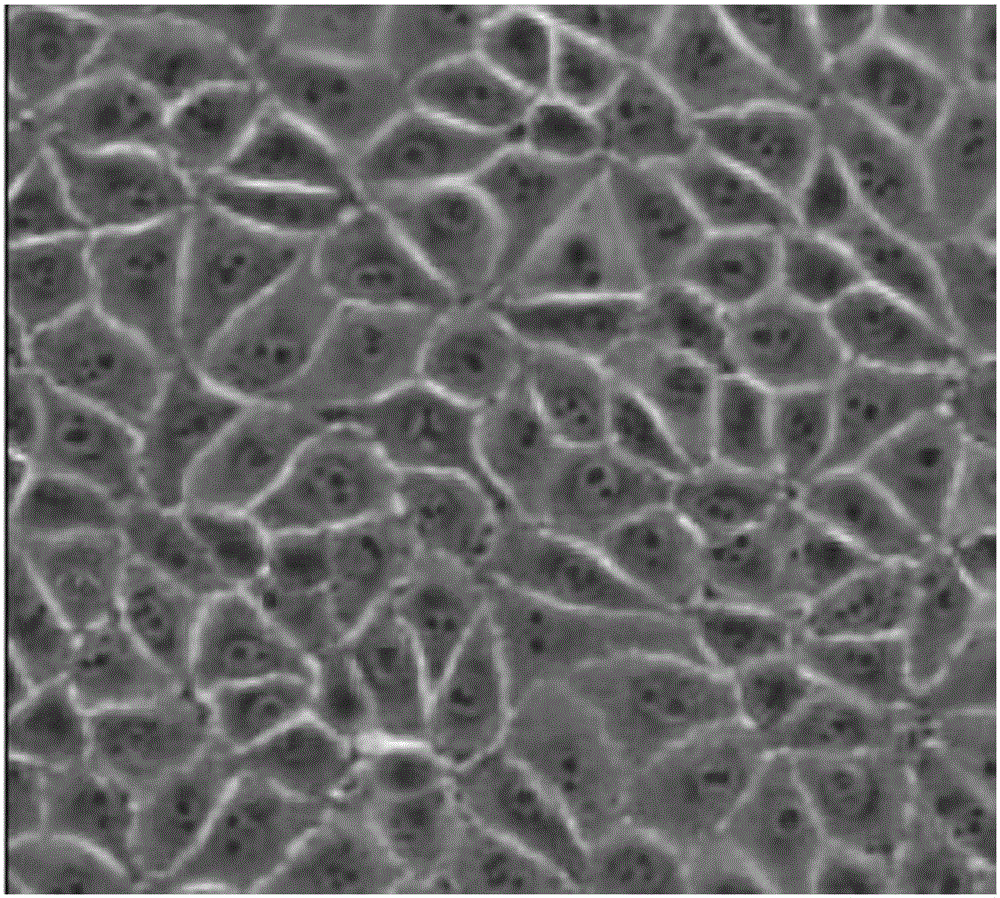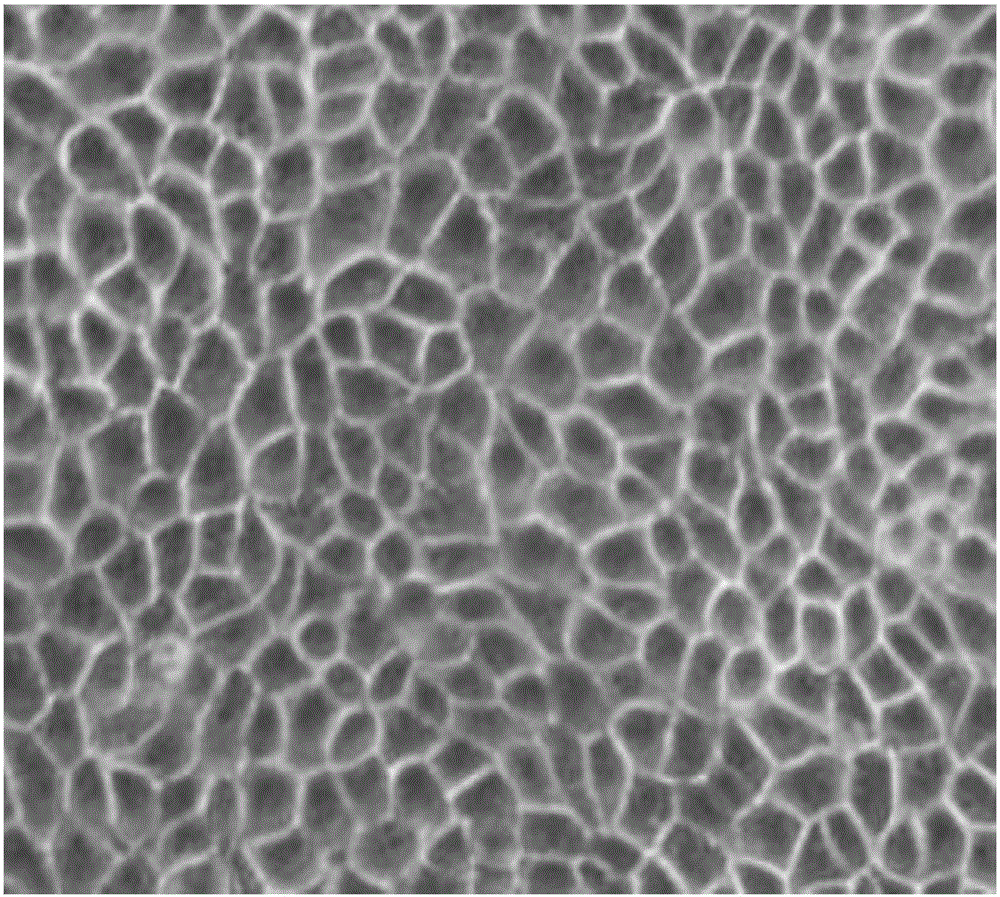Low-serum culture method of PK15 cells, PK15 cells obtained by method and application thereof
A technology of cell culture and culture method, which is applied in the field of PK15 cells, can solve the problems of no application instructions, etc., and achieve the effects of reducing the risk of pollution, simplifying the virus culture process, and reducing the amount of use
- Summary
- Abstract
- Description
- Claims
- Application Information
AI Technical Summary
Problems solved by technology
Method used
Image
Examples
Embodiment 1
[0058] A low serum culture method for PK15 cells, comprising the following steps:
[0059] 1) The adherent cultured PK15 cells were recovered, and then placed in DMEM cell culture medium containing 8% bovine serum, digested and passaged with EDTA-trypsin digestion solution, and cultured until the cells covered a single layer; then the volume Use EDTA-trypsin digestion solution at a ratio of 1:3 to digest and passage the cells, and subculture for 3 generations;
[0060] 2) Place the PK15 cells treated in step 1) in MD611 cell culture medium containing 3% bovine serum at a volume ratio of 1:2.5 to digest and passage the cells with EDTA-trypsin digestion solution, and culture until the cells are confluent Monolayer; then use EDTA-trypsin digestion solution at a volume ratio of 1:3 for digestion and passage until the cells are confluent in the monolayer;
[0061] 3) Place the PK15 cells treated in step 2) in MD611 cell culture medium containing 1-2% bovine serum at a volume ratio...
Embodiment 2
[0066] The PK15 cell that obtains by embodiment 1 is applied to the proliferation culture of TGEV Chinese virus strain, comprises the following steps:
[0067] Ⅰ) Prepare PK15 cells: After culturing PK15 cells until the monolayer is confluent, pour off the culture supernatant;
[0068] Ⅱ) Inoculation strain: insert the TGEV Hua strain into PK15 cells with a volume ratio of 1%, add MD611 cell culture medium containing 0.5% bovine serum; then place at a temperature of 37°C, 5% CO 2 cultivated in an incubator;
[0069] Ⅲ) Collect the virus liquid: culture for 48-72 hours until more than 80% of the PK15 monolayer cells have lesions, freeze and thaw repeatedly to harvest the virus liquid, and use this virus liquid as the first generation seed virus aF1;
[0070] Ⅳ) Repeat steps Ⅰ) to Ⅲ) to inoculate aF1 into new PK15 cells and collect the virus liquid to obtain the second generation seed virus aF2;
[0071] Ⅴ) Continuously repeat steps Ⅰ)~Ⅲ) to domesticate the seed poison of the...
Embodiment 3
[0077] The characteristic of this embodiment is that: in step II), MD611 cell culture medium containing 0.3% bovine serum is added; other steps and parameters are the same as in embodiment 2. Obtain seed viruses bF1, bF2, bF3, bF4, bF5, measure the virus content values of bF3, bF4, bF5, use MD611 cell culture medium containing 0.3% bovine serum as virus diluent, and the cells used for virus titer measurement are for virus culture For PK15 cells, the average value was measured 3 times, and the virus content values are shown in Table 2:
[0078] Table 2 Example 3 virus content value
[0079]
[0080]
[0081] The diseased cells of PK15 cells are as follows Figure 5 As shown, all PK15 cells can undergo pathological changes.
PUM
 Login to View More
Login to View More Abstract
Description
Claims
Application Information
 Login to View More
Login to View More - R&D
- Intellectual Property
- Life Sciences
- Materials
- Tech Scout
- Unparalleled Data Quality
- Higher Quality Content
- 60% Fewer Hallucinations
Browse by: Latest US Patents, China's latest patents, Technical Efficacy Thesaurus, Application Domain, Technology Topic, Popular Technical Reports.
© 2025 PatSnap. All rights reserved.Legal|Privacy policy|Modern Slavery Act Transparency Statement|Sitemap|About US| Contact US: help@patsnap.com



